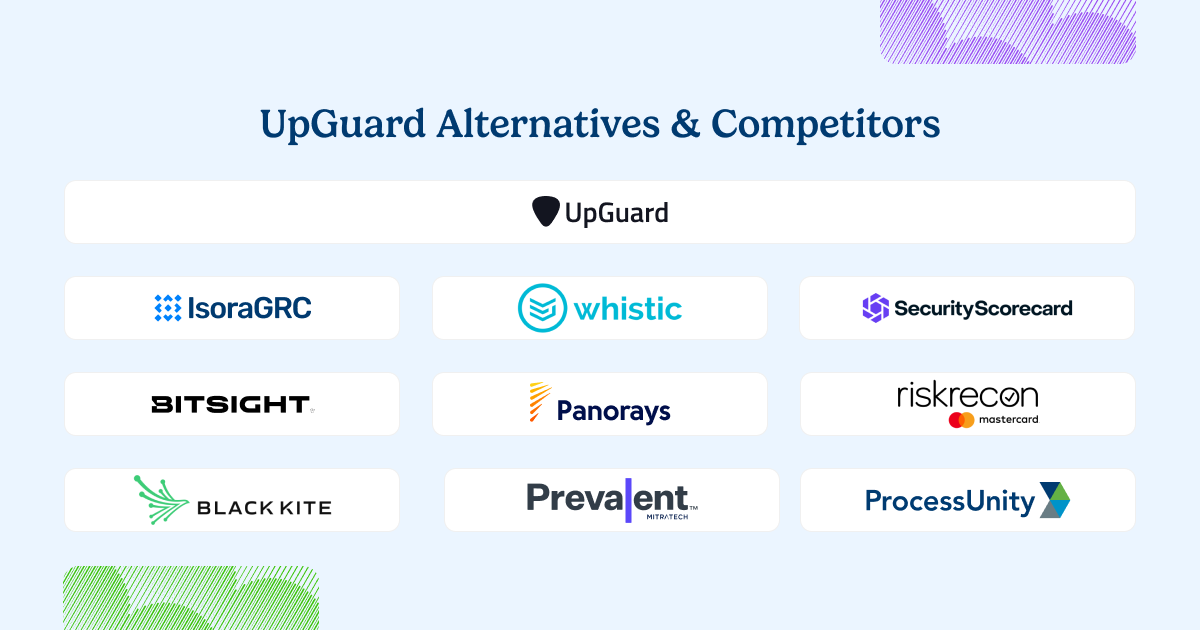
UpGuard is widely used for monitoring third-party vendors through automated scans and security ratings. It gives security teams external visibility into vendor posture—but lacks the workflows needed to manage real vendor risk assessments, inventories, or exceptions.
If you need to engage vendors directly, collect questionnaires, or track remediation across teams, UpGuard falls short. It’s a well-known intelligence feed, not a workflow engine.
UpGuard belongs to a category of vendor intelligence platforms—tools that focus on scoring and continuously monitoring risk, not managing it.
Why Teams Look for UpGuard Alternatives
| Common Limitation | Why It’s a Problem | What to Look for Instead |
| Focuses on external signals only | Doesn’t enable internal review or follow-up | Structured vendor risk assessments and tracking |
| No support for questionnaires or inventories | Can’t engage vendors or track risk contextually | Built-in questionnaires, evidence collection, and inventories |
| Static scoring without remediation workflow | Doesn’t help resolve issues or track accountability | Exception workflows tied to vendor and asset risk |
| Low adaptability for internal teams | Doesn’t connect with broader IT risk workflows | Unified platform for internal and third-party risk |
What to Look for in an UpGuard Alternative
- Support for customizable vendor questionnaires (e.g., SIG, HECVAT, CAIQ)
- Centralized vendor inventories and risk registers
- Exception tracking and remediation workflows tied to real vendors
- Tools for both internal and external assessments
- A platform that turns risk signals into actionable next steps
Top UpGuard Alternatives
1. Isora GRC
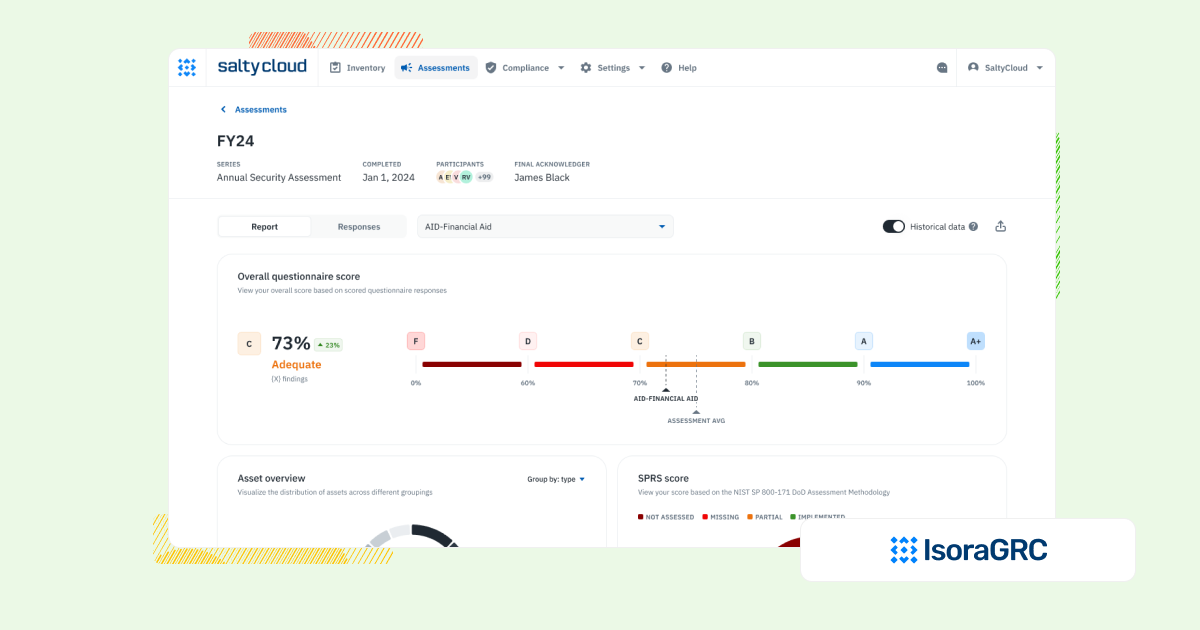
| Category | Details |
| Best For | Security teams that need to operationalize IT and third-party risk management across assets, third-party vendors, and business units. |
| Overview | Isora GRC is the GRC Assessment Platform™ built specifically for information security teams. It supports the full risk workflow, from assessments and questionnaires to risks, inventory, and reporting, without the complexity of legacy GRC tools or the limitations of audit-first platforms. |
| Strengths | Built for workflows, not checklists
✅ Supports assessments, inventory tracking, risk registers, and exceptions in a unified experience. Designed for org-wide adoption ✅ WCAG-compliant UX that requires no training and makes risk everyone’s job. Fast time-to-value ✅ Live in days or weeks, with no-code setup and minimal lift from IT. Flexible by default ✅ Customizable assessments, scalable categories, and framework mapping without heavy configuration. Scales across teams and vendors ✅ Works equally well for internal teams and third-party risk management programs. |
| Limitations | ⚠️ Not designed for legal, audit, or finance teams seeking one platform for enterprise-wide GRC
⚠️ May be too structured for teams looking to build one-off surveys or lightweight audits without repeatable workflows |
| When to Consider | If you need a modern risk platform built for continuous use, with workflows your security team will actually adopt, without the surface-level scoring limitations of vendor intelligence platforms. |
2. Whistic
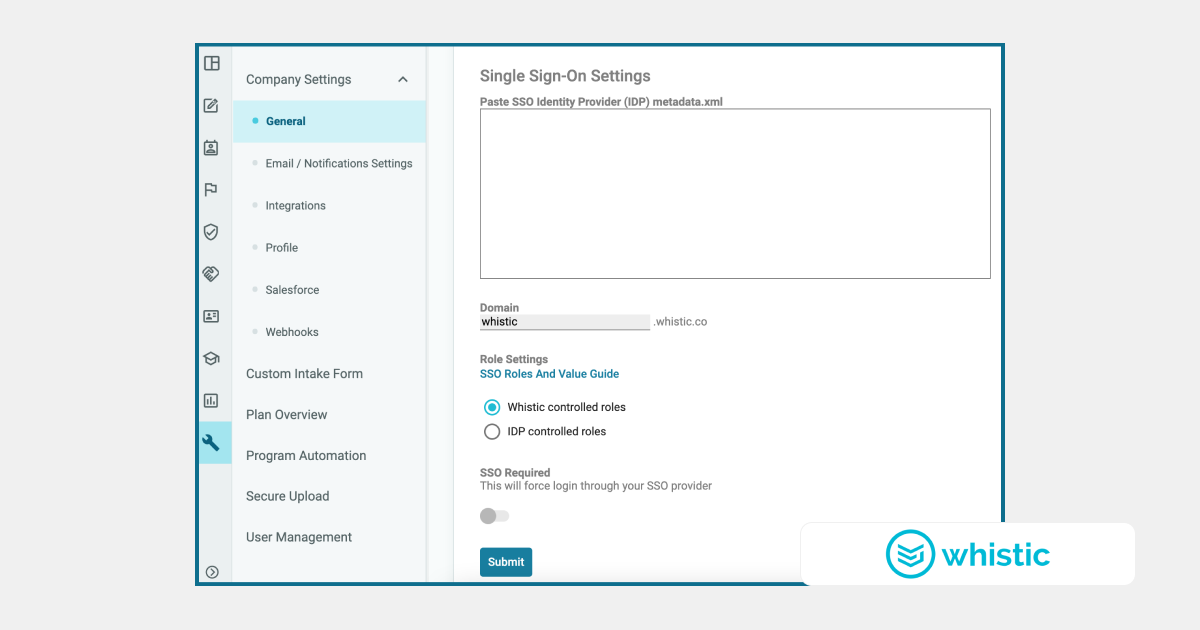
| Category | Details |
| Best For | Security teams focused on reviewing vendor-provided data rather than managing internal risk workflows. |
| Overview | Whistic helps organizations collect and review vendor security documentation using standardized or custom questionnaires. It’s great for exchanging information but lacks broader risk tracking or internal risk workflows. |
| Strengths | ✅ Streamlined vendor reviews with standard questionnaires (e.g., CAIQ, ISO)
✅ Vendor Trust Catalog for faster third-party evaluations |
| Limitations | ⚠️ No built-in tools for exception tracking or internal assessments
⚠️ Lacks support for vendor inventory management and remediation |
| When to Consider | If you need a tool to review vendor documentation and share questionnaires but can work around the absence of structured risk workflows and internal collaboration tools. |
| Other Comparisons | UpGuard vs Whistic vs Isora GRC |
3. SecurityScorecard
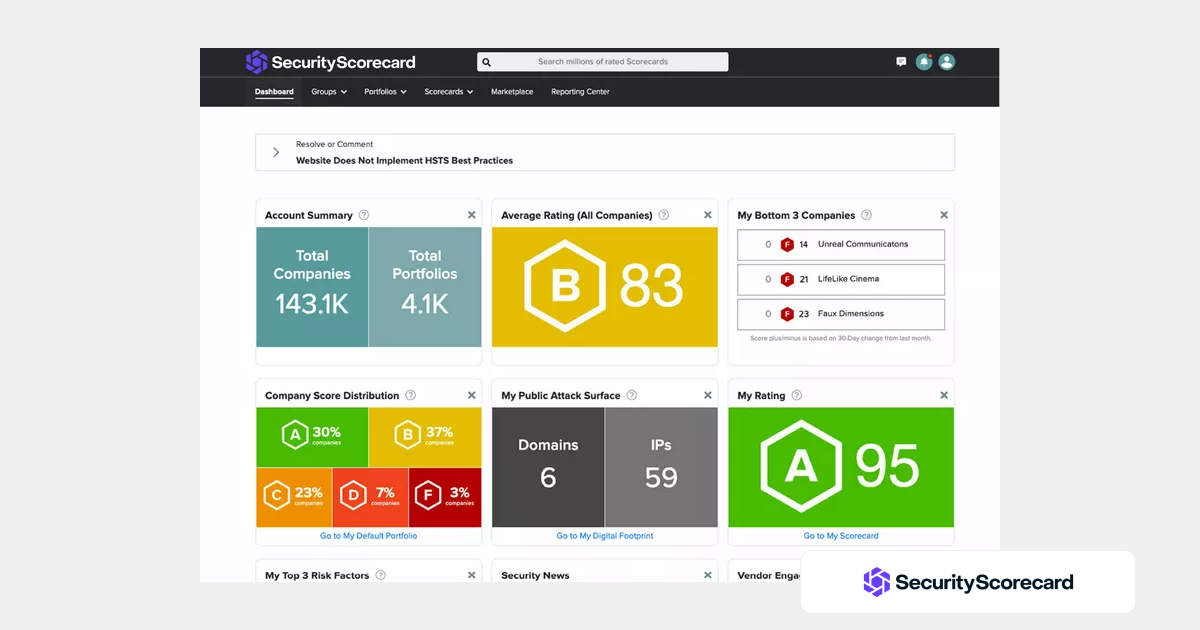
| Category | Details |
| Best For | Security teams that need a quick snapshot of external vendor posture based on public data. |
| Overview | SecurityScorecard continuously monitors vendor security posture using external signals. It helps prioritize vendors based on scores but doesn’t support follow-up assessments, inventories, or risk tracking. |
| Strengths | ✅ Real-time scoring of vendor cyber risk
✅ Covers a wide range of external security data points |
| Limitations | ⚠️ No support for internal questionnaires or exception workflows
⚠️ Limited ability to manage vendor remediation or document risk ownership |
| When to Consider | If you need a way to monitor external vendor posture at scale but can work around the lack of internal risk assessment tools or collaborative workflows. |
| Other Comparisons | Bitsight vs SecurityScorecard vs Isora GRC
RiskRecon vs SecurityScorecard vs Isora GRC |
4. Bitsight
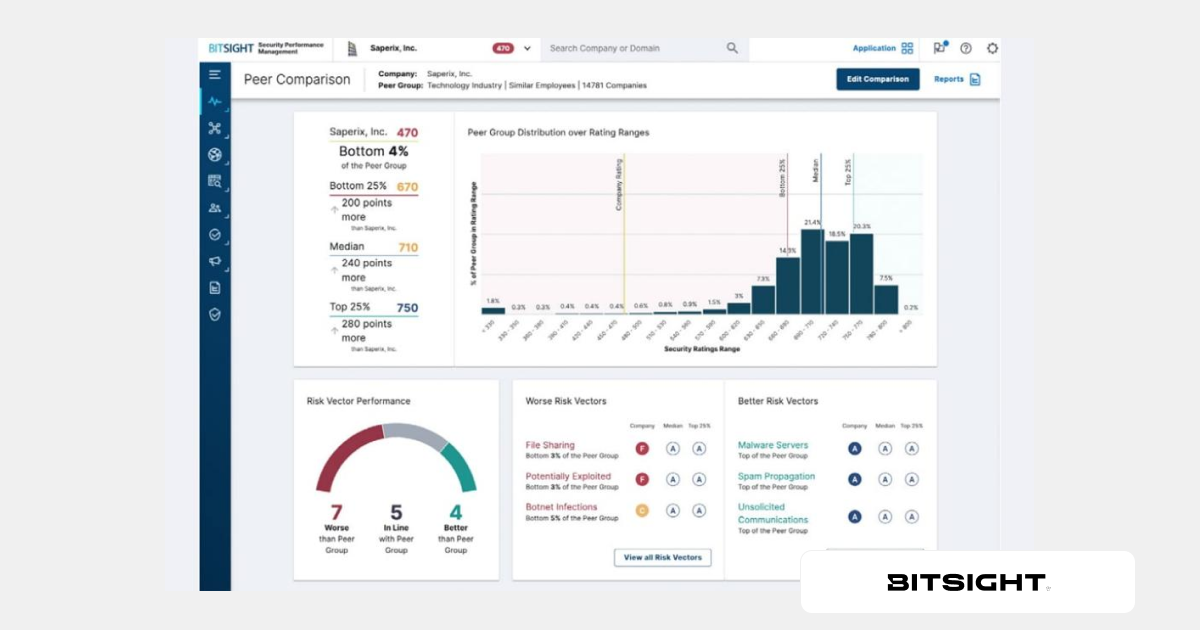
| Category | Details |
| Best For | Teams that want high-level visibility into third-party cyber posture using automated scoring. |
| Overview | Bitsight provides cyber risk ratings based on external data and threat intel. It’s good for vendor comparison but doesn’t offer workflows for assessments, inventories, or exception tracking. |
| Strengths | ✅ Easy-to-read vendor scores for quick evaluations
✅ Broad monitoring coverage across industries |
| Limitations | ⚠️ Doesn’t support questionnaires or internal vendor risk processes
⚠️ Lacks exception workflows and remediation tracking |
| When to Consider | If your focus is getting external insights on vendor posture but you can work around the need for internal risk assessments or deeper third-party workflows. |
| Other Comparisons | Bitsight vs UpGuard vs Isora GRC
Bitsight vs SecurityScorecard vs Isora GRC |
5. Panorays
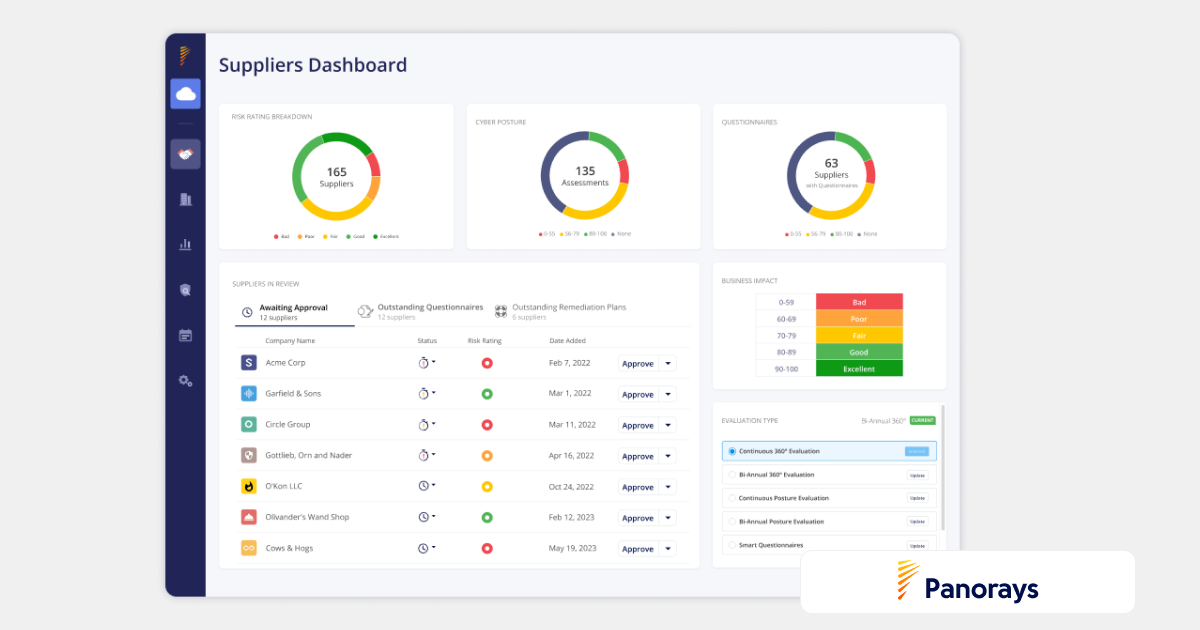
| Category | Details |
| Best For | Organizations that want to combine external ratings with lightweight questionnaires. |
| Overview | Panorays combines third-party security ratings with automated questionnaire tools. It’s more flexible than pure scoring platforms but still doesn’t provide deep exception or risk tracking. |
| Strengths | ✅ Includes both external scores and vendor questionnaires
✅ Useful for streamlining vendor onboarding |
| Limitations | ⚠️ Lacks exception workflows or structured remediation tools
⚠️ No inventory or asset-level vendor risk management |
| When to Consider | If you want to combine ratings with assessments but can work around the platform’s lack of exception tracking and internal collaboration features. |
| Other Comparisons | Bitsight vs Panorays vs Isora GRC |
6. RiskRecon
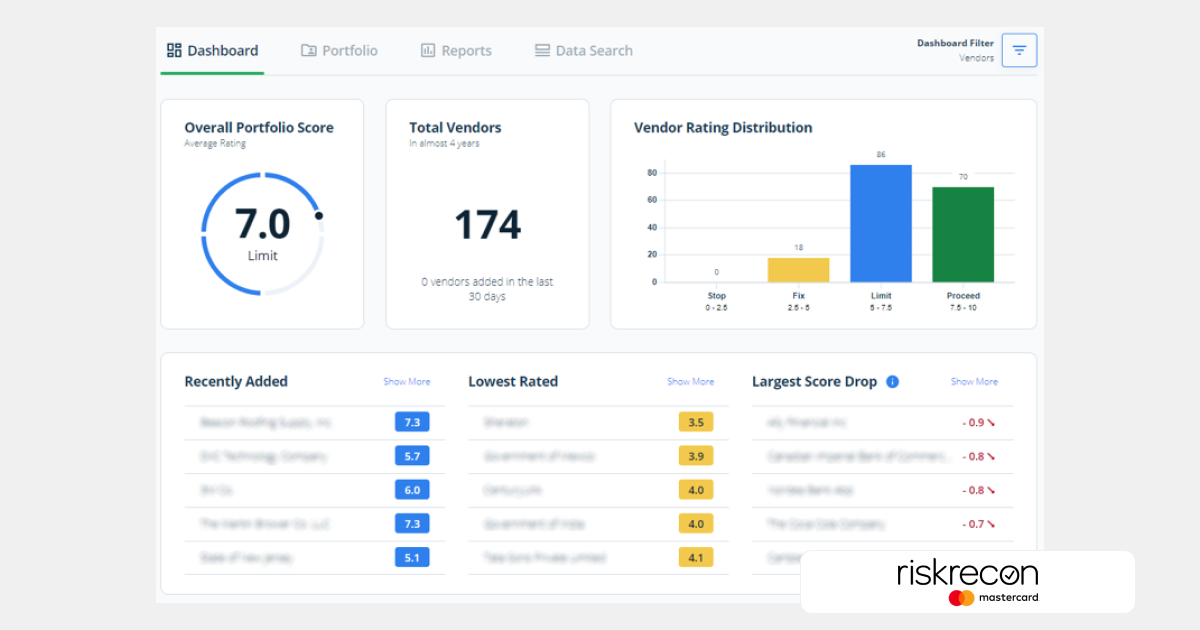
| Category | Details |
| Best For | Security teams that need fast, external insight into vendor posture without internal workflow support. |
| Overview | RiskRecon provides third-party cyber risk scores based on publicly available data. It’s good for identifying surface-level issues but doesn’t support internal assessments, remediation, or tracking. |
| Strengths | ✅ Continuous monitoring with easy-to-understand vendor scores
✅ Prioritizes vendors based on exposure |
| Limitations | ⚠️ No tools for internal questionnaires, exceptions, or risk registers
⚠️ Limited visibility beyond external indicators |
| When to Consider | If you want basic vendor scores for screening but can work around the lack of structured workflows for vendor engagement and internal risk ownership. |
| Other Comparisons | RiskRecon vs SecurityScorecard vs Isora GRC |
7. Black Kite
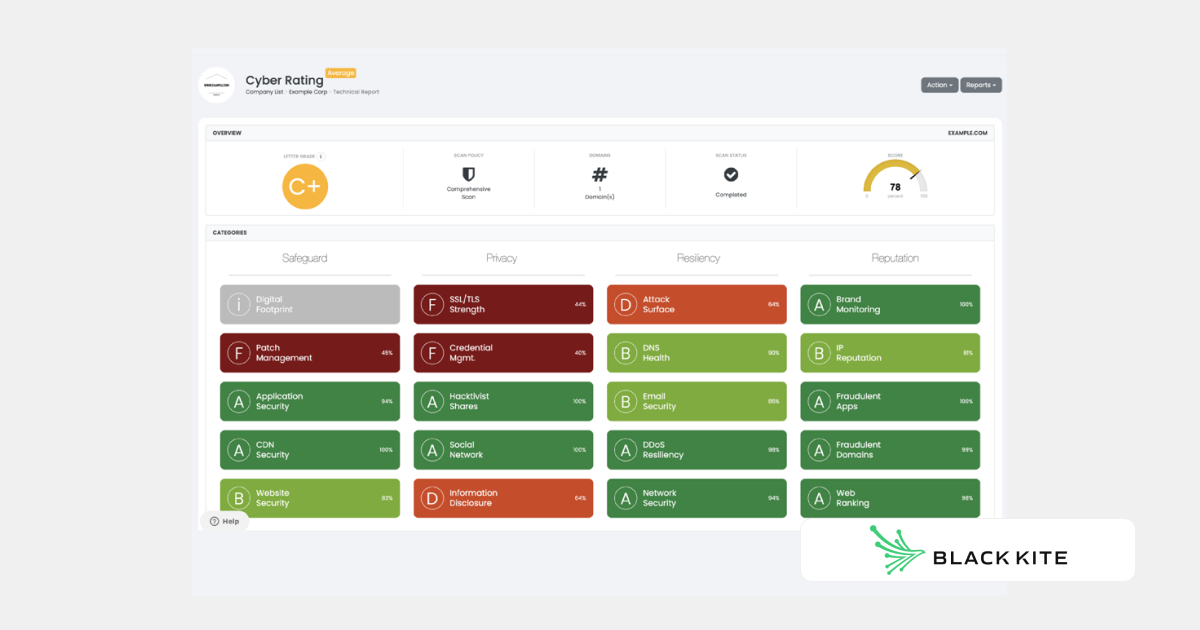
| Category | Details |
| Best For | Teams looking for external vendor risk scores tied to business impact language (e.g., financial or regulatory exposure). |
| Overview | Black Kite translates external risk data into business terms, like estimated financial exposure. It’s good for reporting, but doesn’t offer workflows for managing assessments, exceptions, or vendor remediation. |
| Strengths | ✅ Scores mapped to business risk and compliance exposure
✅ Continuous risk monitoring and threat modeling |
| Limitations | ⚠️ Doesn’t include internal risk workflows or vendor engagement tools
⚠️ Lacks exception handling and remediation tracking |
| When to Consider | If you want to translate external vendor risk into business terms but can work around the lack of practical tools for running assessments and tracking vendor remediation. |
| Other Comparisons | Black Kite vs Bitsight vs Isora GRC |
8. Prevalent
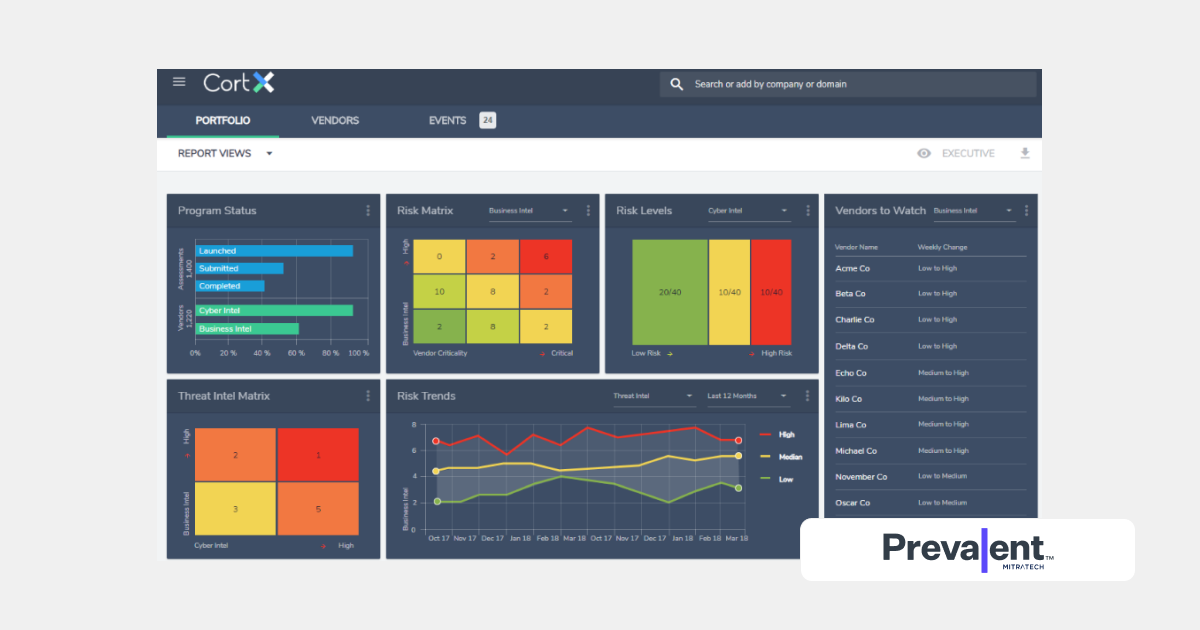
| Category | Details |
| Best For | Organizations looking to combine vendor questionnaires, external risk data, and built-in remediation tracking. |
| Overview | Prevalent offers a full vendor risk management platform with assessment templates, continuous monitoring, and AI-enhanced analysis. It supports broader workflows than most intelligence-only platforms. |
| Strengths | ✅ Combines internal assessments with external monitoring
✅ Includes remediation and exception management features |
| Limitations | ⚠️ Can require setup and training to configure properly
⚠️ Primarily focused on third-party risk, not broader IT risk management |
| When to Consider | If you want a platform that combines third-party assessments with remediation workflows but can work around limited features for internal risk programs. |
9. ProcessUnity
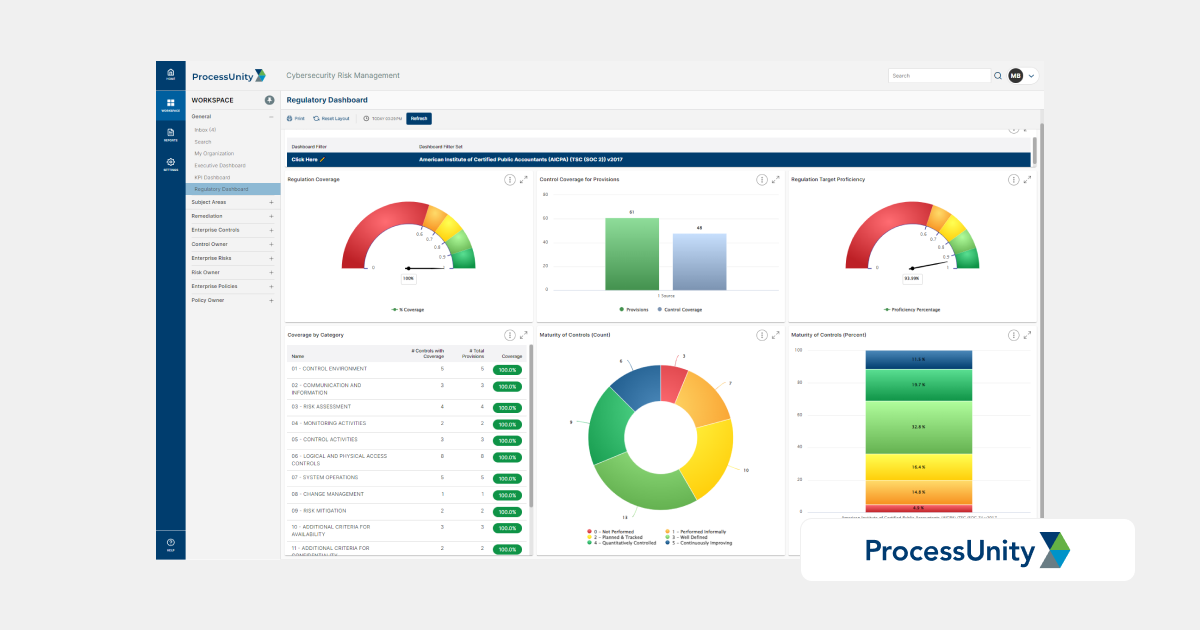
| Category | Details |
| Best For | Teams that want a structured platform to manage the full vendor risk lifecycle, from onboarding to ongoing monitoring. |
| Overview | ProcessUnity provides a configurable TPRM platform that automates vendor onboarding, risk assessments, and tracking. It integrates internal workflows with monitoring, but requires some setup to scale. |
| Strengths | ✅ Automates vendor assessments and lifecycle workflows
✅ Supports centralized tracking with dashboard visibility |
| Limitations | ⚠️ May require customization and internal resources for configuration
⚠️ Focused on vendor workflows, not built for internal IT risk use cases |
| When to Consider | If you want a flexible TPRM system with built-in workflows but can work around the lack of support for internal risk assessments or system-level tracking. |
| Other Comparisons | ProcessUnity vs Allgress vs Isora GRC |
What Our Customers Say About Isora GRC
Security teams at top institutions are using Isora GRC to replace legacy tools and manual processes with intuitive workflows and actionable insight.
“Moving from manual processes to using Isora was a breath of fresh air. What used to take months is now automated, reliable, and defensible. Isora saves us significant time while delivering accurate insights that improve decision-making.”
Jessica Sandy, IT GRC Manager, The University of Chicago
“Isora has been essential in helping us meet our University of California cybersecurity requirements across a decentralized campus. Automating assessment data collection and reporting has given us clear visibility into unit-level risks, enabling us to prioritize resources effectively and address gaps with confidence.”
Allison Henry, CISO, The University of California, Berkeley
FAQs
What are some alternatives to UpGuard?
UpGuard is a vendor risk monitoring tool that focuses on external security signals and breach exposure. Alternatives like Isora GRC offer structured workflows for managing third-party risk from the inside out—through questionnaires, inventories, exception tracking, and internal follow-up.
Why do teams switch from UpGuard to platforms like Isora GRC?
Teams often turn to UpGuard for quick vendor insights but leave when they realize scoring alone doesn’t manage risk. It lacks workflows for issuing assessments, tracking remediation, or maintaining vendor accountability. Isora GRC enables that full lifecycle with built-in tools for managing vendor and IT risk.
Does Isora GRC replace tools like UpGuard or complement them?
In many cases, Isora GRC replaces UpGuard by covering the full vendor risk management workflow—from sending assessments to logging exceptions and monitoring resolution. Some teams choose to use UpGuard alongside Isora GRC for passive monitoring, but Isora handles the active work.
Which platform is better for managing vendor risk assessments?
UpGuard doesn’t offer built-in workflows for issuing questionnaires or tracking results. Isora GRC does—supporting frameworks like SIG, HECVAT, and CAIQ, while maintaining inventories and documenting risk mitigation efforts over time.
What should I look for in an UpGuard alternative?
Look for a platform that does more than rate vendors—it should help you assess them directly, collect documentation, log exceptions, and manage your vendor inventory. Isora GRC is built to turn vendor risk insights into real, actionable workflows.
This content is for informational purposes only and does not constitute legal or compliance advice. See our full disclaimer.


















